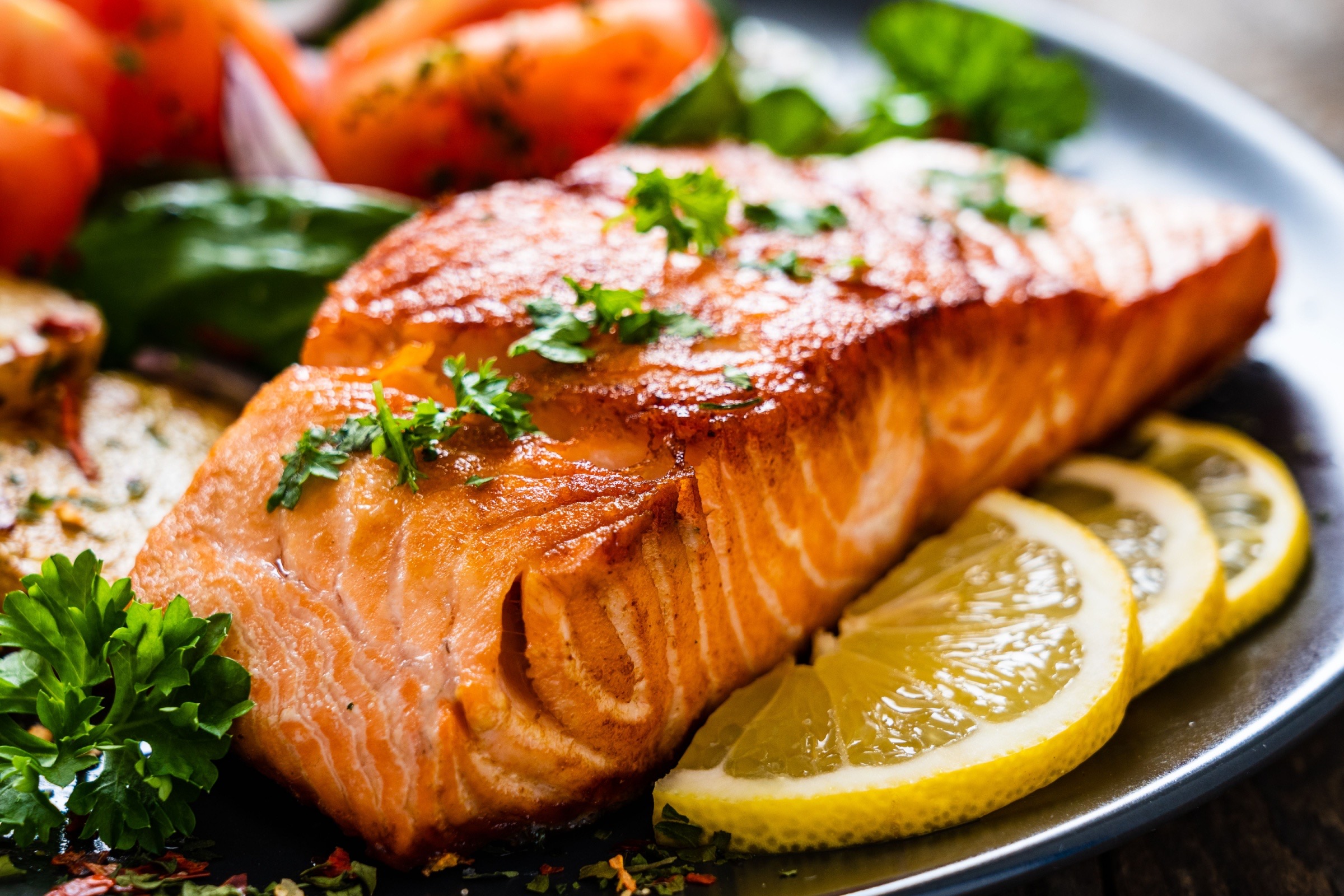No one enjoys a sunburn. From peeling skin to fine lines and wrinkles to deadly melanoma, prolonged exposure to the sun can cause unwanted side effects and risks. While the summer sun is the best source of vitamin D, there is potential for too much of a good thing.
The known dangers of conventional sunscreen use have many seeking the healthiest option for mitigating sun damage while increasing vitamin D absorption. One potential answer to this conundrum may be on your plate.
Several studies show that consuming omega-3 fatty acids, specifically docosahexaenoic acid (DHA) and eicosapentaenoic acid (EPA), may offer protection from ultraviolet A (UVA) and ultraviolet B (UVB) rays. The third omega-3, alpha-linolenic acid (ALA), has been shown to increase the skin’s threshold for sunburn by preventing an inflammatory response.
Many Americans are deficient in these three fatty acids and are missing out on an important barrier to sun damage. There is a direct correlation between the amount of fatty acids present in the skin and how much of it one consumes. Research shows that consuming fish oil deposits fatty acids into the skin in just three to six months. Incorporating healthy fatty acids into your diet may offer a natural alternative to conventional sunscreens.
How Fatty Acids Offer Protection From Sun Damage
Fatty acids are important for maintaining healthy skin in general, and they can also help enhance sun protection. Omega-3 fatty acids found in foods like fish, nuts, and seeds, have been shown to reduce inflammation and protect against sun damage. Incorporating these foods into your diet can help mitigate skin damage from the sun. While fatty acids alone are not a substitute for proper sun protection, they can be a helpful addition to your overall suncare routine.
A study published in Carcinogenesis in 2003 found that consuming four grams (gm) of EPA daily for three months increased the subjects’ resistance to sunburn by 136 percent. A study from The University of Manchester in 2013 concluded: “Taking a regular dose of fish oils boosted skin immunity to sunlight. Specifically, it also reduced sunlight-induced suppression of the immune system, known as immunosuppression, which affects the body’s ability to fight skin cancer and infection.”
One clinical trial gave participants oral fish oil containing rich omega-3 fatty acids daily for four weeks and found it significantly increased their minimal erythema dose, or the amount of UV radiation required to produce a sunburn. The higher the minimal erythema dose, the more sun exposure you can tolerate before burning.
Additionally, a review of 38 studies published in 2020 found that supplementing with omega-3 fatty acids reduces the incidence of skin cancer, and some studies suggest fish oil consumption may help combat photo-aging and wrinkling in areas exposed to the sun.
Foods High in Sun-Protective Fatty Acids
EPA and DHA are two types of omega-3 fatty acids that are commonly found in fatty fish. In addition to their sun-protective benefits, EPA (eicosapentaenoic acid) and DHA (docosahexaenoic acid) are essential for the proper functioning of our bodies, especially our brain and heart health. They are known to have anti-inflammatory properties and may help reduce the risk of various chronic diseases.
According to a review on the photoprotective properties of omega-3 fatty acids, “The richest dietary sources of EPA and DHA are marine animals, with oily fish such as mackerel, sardines, herrings, and salmon containing EPA and DHA at 30–50% of tissue fatty acids.”
So, what are the best fatty fish, nuts, and seeds to eat for a boost in sun protection?
1. Mackerel: Atlantic mackerel contains 2.5 gm of DHA and EPA in a 100-gram serving (about a 3.5-ounce portion).
2. Salmon: Salmon contains between 1 to 1.8 grams of DHA and EPA in a 100-gram portion, depending on the type of species.
3. Herring: Herring includes 1.6 to 1.7 grams of DHA and EPA per 100-gram portion.
4. Cod liver oil: 2.4 grams of DHA and EPA are in a one-tablespoon serving of cod liver oil.
5. Canned sardines: Sardines contain 1 gram of DHA and EPA per 100-gram portion. A standard tin usually contains around 100 grams.
6. Anchovies: 100 grams of anchovies contains 1.4 grams of DHA and EPA. Five anchovies are roughly 20 grams.
7. Fish eggs/roe: One ounce of caviar contains 1.9 grams of DHA and EPA. A tablespoon contains about 1 gram.
8. Flaxseeds, chia seeds, and walnuts: All are rich in ALA, the third type of omega-3 fatty acid. However, the body doesn’t always efficiently convert ALA into DHA and EPA. Only a small amount of ALA is processed effectively to reap the benefits.
Known Risks of Sunscreen to Consider
While sunscreen can be an effective and convenient way to protect your skin from harmful ultraviolet rays, there are some
potential dangers to be aware of. Some sunscreens contain chemicals that may be harmful to human health or the environment. Additionally, there is some concern that using sunscreen could lead to a false sense of security, causing people to spend more time in the sun than they otherwise would.
It is also important to note that sunscreen use can reduce the production of vitamin D in our bodies. Vitamin D is crucial for strong bones, managing inflammation, and overall health and wellness. To maintain healthy vitamin D levels, some experts recommend spending portions of time in the sun without sunscreen, particularly at midday when the sun is at its highest point.
A peer-reviewed study published in 2021 concluded that many sunscreens don’t provide adequate protection from UVA rays. Further, the SPF listed on sunscreen products’ labels was often incongruent with the study’s findings, with levels in the products meeting just half of the labeled reduction strength.
In addition to aiming for sufficient fatty fish intake, wearing protective clothing, seeking shade, and avoiding prolonged sun exposure during peak hours are safe ways to protect your skin.














